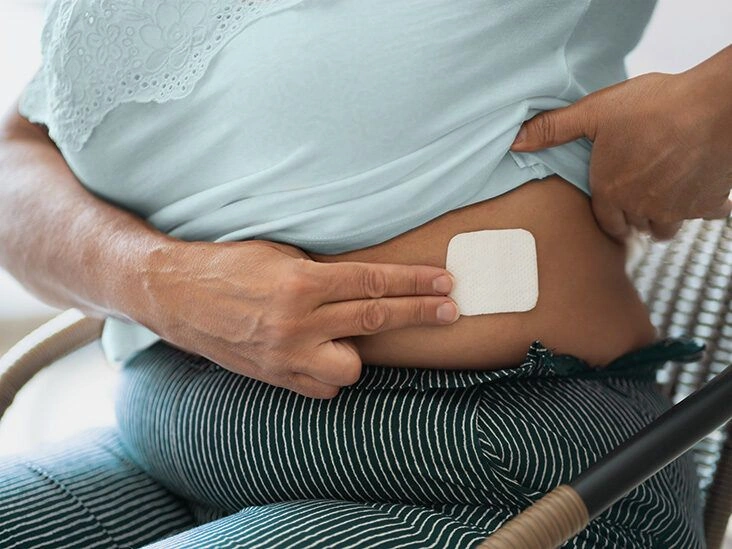Weight loss patches are adhesive strips applied to the skin that claim to deliver active ingredients into the body over a set period. Evidence supporting their effectiveness is limited.
These patches are promoted as aiding weight reduction by transporting compounds through the skin, a method called transdermal delivery. They’re sometimes marketed as “slim” or “slimming” patches.
There are several varieties of patches on the market, containing either natural, plant-derived ingredients or prescription medications.

A small amount of research hints at potential benefits from weight loss patches, but only a handful of human trials have assessed the effectiveness of ingredients designed to be absorbed through the skin via these products.
Even when taken orally, many of these ingredients lack robust evidence, and the transdermal pathway is even less researched.
Continue reading to learn more about the different types, effectiveness, and safety considerations of weight loss patches.
Types of weight loss patches
Common components found in weight loss patches include the following:
Açai berry
Açai is a fruit harvested from palms in the Amazon. Interest in its use as a supplement has grown due to various purported health benefits.
For example, a small study discovered that eating 200 grams (g) of açai pulp for 60 days reduced oxidative stress and inflammation, both of which are linked to weight gain and obesity.
However, only limited research has considered açai’s effects when used in weight loss patches. More investigation is necessary to determine the fruit’s true effectiveness in this form.
Green coffee bean extract
Green coffee beans are unroasted coffee seeds. They are advertised to help lower fat accumulation and boost energy.
Nevertheless, there is little proof that green coffee beans or their extracts produce significant weight loss.
A small 2021 study reported that people with obesity lowered their body fat over 12 weeks while taking the supplement, but that trial involved just 60 participants and did not use a patch.
While this recent finding is intriguing, further studies are required to clarify the effects and safety of green coffee bean supplements.
Garcinia cambogia
Garcinia cambogia is frequently included in weight loss patches. The ingredient is derived from a tree native to parts of Asia, Africa, and the Polynesian Islands.
Some research has suggested that garcinia cambogia supplementation can reduce body fat, improve body composition, and lower weight.
However, garcinia cambogia may cause serious adverse effects.
A 2018 case report and review of the literature found that this supplement has been linked to liver toxicity, inflammation, and fibrosis. Other potential side effects include:
- headache
- nausea
- cough
- nasal congestion
- upset stomach
- diarrhea
Do weight loss patches work?
Some research suggests weight loss patches might help decrease body weight, but only a very small number of human studies have evaluated them.
Dietary supplements are not required to meet the same efficacy standards as over-the-counter or prescription medications, so there isn’t solid evidence proving that weight loss patches cause meaningful weight loss.
Additionally, studies sponsored by manufacturers are often small and do not adhere to the rigorous standards expected in scientific research.
Side effects of weight loss patches
Transdermal drug delivery systems like patches may cause fewer systemic side effects than oral drugs or injections, partly because they are easier to use and typically involve less blood exposure and pain.
However, the adverse effects of weight loss patches are not well characterized.
This uncertainty exists in part because the Food and Drug Administration (FDA) does not regulate dietary supplements to the same extent as medicines, and many ingredients in transdermal weight loss patches have only been studied when taken orally.
Different patches contain different ingredients, so side effects will vary. Consulting a healthcare professional is the best way to understand how a specific weight loss patch might affect you. They can help determine whether a product is a safe option for your circumstances.
Frequently asked questions
Where is the best place to put a slimming patch?
There’s no official recommendation for the ideal placement of a slimming patch to achieve any potential benefits. Patch makers may suggest applying them to the area where you wish to reduce fat.
How many slim patches per day?
The daily number of slim patches to use depends on the product’s manufacturer. Some patches are designed to last a full day, while others may need to be replaced every few hours.
The bottom line
Weight loss patches have not been proven to be safe or effective tools for reducing weight.
If you want to lose weight but are unsure how to begin, speaking with a healthcare provider is a sensible first step. They can help create a safe, effective weight loss plan tailored to your needs and address questions about weight loss patches, prescription weight-loss drugs, and other strategies.


















Leave a Reply
You must be logged in to post a comment.